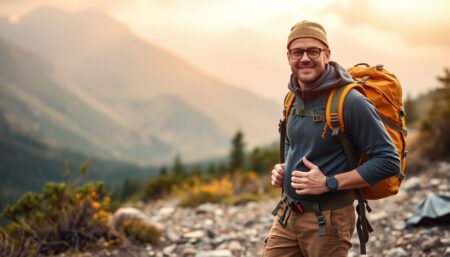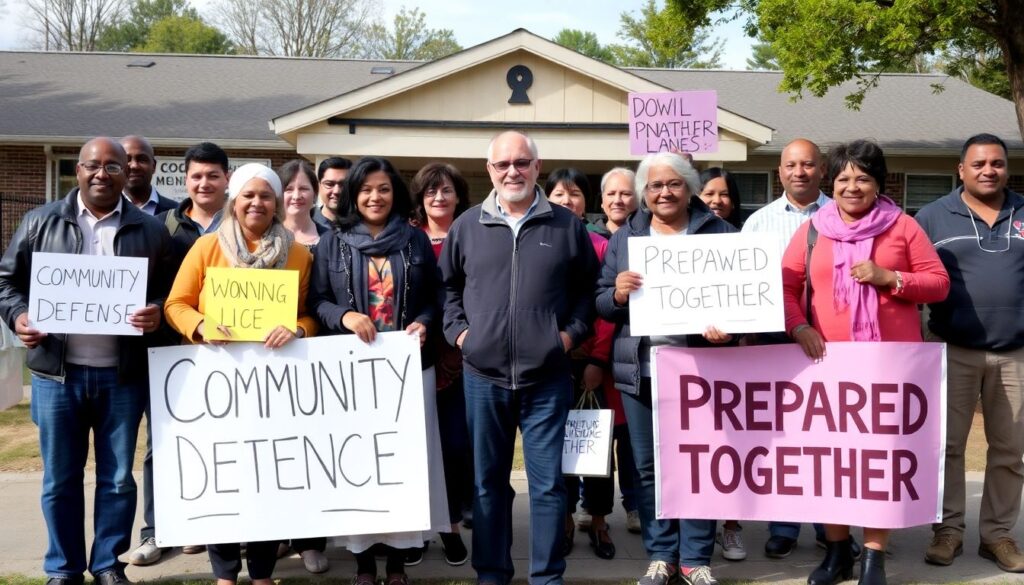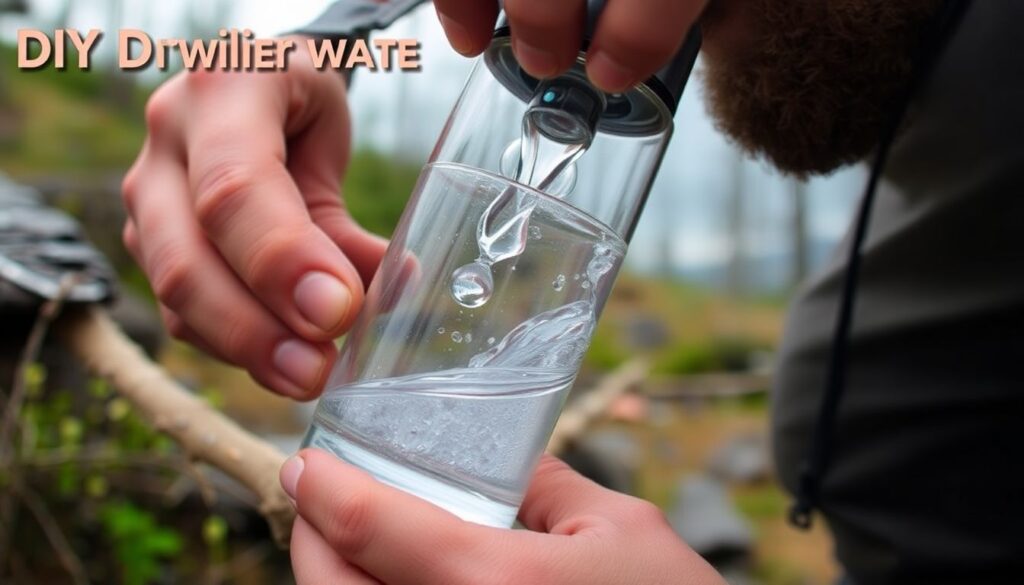In the heart of our bustling cities, amidst the concrete jungle, lies an untapped resource that could mean the difference between survival and scarcity in a crisis: edible plants. Urban foraging, the practice of collecting and consuming wild plants, has long been a survival skill, but in today’s world of supermarkets and delivery apps, it’s a skill that’s largely forgotten. This article, ‘Urban Foraging: Finding Food in a Crisis’, aims to reignite this ancient practice, providing a comprehensive guide to help urban dwellers prepare for potential food shortages and ensure their survival in challenging times. According to the United Nations, by 2050, 68% of the world’s population will live in urban areas, up from 55% today. This rapid urbanization, coupled with the increasing frequency and severity of natural disasters and global crises, underscores the importance of knowing how to find and identify edible plants in an urban environment. But the question remains: are you ready to rely on your city’s green spaces for sustenance when the need arises? This article agrees that the thought of urban foraging might seem daunting, even unimaginable, to many city residents. However, it promises to demystify this ancient practice, making it accessible and relevant to modern urban life. By the end of this article, you will have a solid understanding of the art and science of urban foraging, equipped with the knowledge and confidence to identify and safely consume a variety of edible plants found in your city. Here’s what you can expect to learn: we’ll start by debunking common myths about urban foraging and exploring the nutritional benefits of wild plants. Then, we’ll delve into the fascinating world of edible plants, discussing their identification, collection, and preparation. We’ll also provide a detailed guide on where to find these plants in an urban environment, from city parks to your own backyard. Additionally, we’ll discuss the legal and ethical considerations of urban foraging, ensuring that you’re not only feeding yourself but also respecting your city’s green spaces. But the purpose of this article goes beyond mere survival. Urban foraging is a gateway to reconnecting with nature, fostering a deeper appreciation for our urban ecosystems, and promoting sustainable living. It’s about taking control of our food sources, reducing our reliance on industrial agriculture, and embracing a more resilient, self-sufficient lifestyle. So, whether you’re a seasoned prepper or a curious city dweller, this article is for you. It’s time to look at our cities with new eyes, to see not just concrete and steel, but a vast, untapped larder waiting to be explored. It’s time to learn the art of urban foraging, to ensure not just our survival, but our thrival, in a crisis. So, let’s embark on this journey together, one wild plant at a time.
Harvesting Nature’s Bounty in the City: A Guide to Urban Foraging for Survival
In the heart of the urban jungle, where concrete and steel towers reach for the sky, lies an often overlooked yet abundant resource: nature’s bounty. Urban foraging, the practice of gathering wild, edible plants in urban environments, is not only a fascinating hobby but also a practical skill for survival and self-sufficiency. This guide aims to equip city dwellers with the knowledge and confidence to harvest nature’s gifts responsibly and safely. By understanding the diverse range of edible plants that thrive in urban ecosystems, from dandelions to purslane, and from mulberries to wild apples, we can supplement our diets, reduce our carbon footprint, and reconnect with the natural world. However, urban foraging requires mindfulness and caution. It’s crucial to ensure that the plants you harvest are indeed edible, have not been exposed to pollutants, and are not protected by local regulations. This guide will also delve into the art of identification, sustainable harvesting practices, and the legal aspects of urban foraging. By embracing this ancient practice in our modern cities, we can cultivate a deeper appreciation for our urban wilds, foster a sense of community, and enhance our resilience in the face of challenges. So, let’s grab our baskets, don our foraging hats, and set out to explore the untapped potential of our urban landscapes.
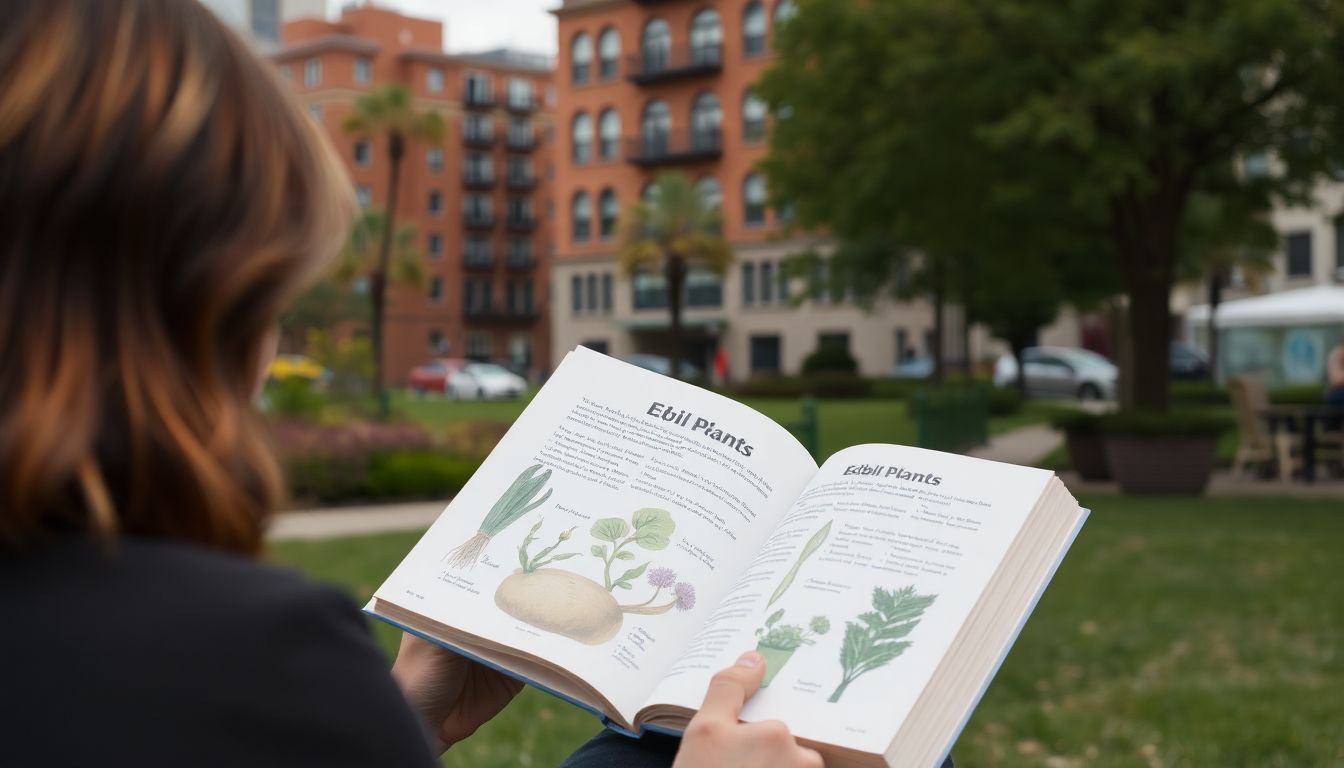
Understanding Urban Foraging
Urban foraging, the practice of gathering wild plants and mushrooms for food or other uses in urban environments, is an ancient practice that has seen a resurgence in recent years. Historically, urban foraging was a necessity for many city-dwellers, providing a source of food and medicine during times of scarcity. Today, it has evolved into a movement that combines sustainability, cost-effectiveness, and a connection to nature.
At its core, urban foraging is about making use of the abundance of wild, edible plants that grow in our cities. From dandelions and purslane in parks to wild apples and berries in backyards, these plants can provide a diverse range of nutrients and flavors. By foraging, we can reduce our reliance on industrial agriculture, which is a significant contributor to greenhouse gas emissions and environmental degradation.
Moreover, urban foraging can be a cost-effective way to obtain food. In a time when food prices are rising and many people are struggling with food insecurity, foraging can provide a supplementary source of food. It can also be a way to connect with nature and engage with the local ecosystem in a meaningful way.
However, it’s crucial to understand that urban foraging is not without its challenges and responsibilities. It’s important to know what you’re foraging for, as some plants can be toxic or harmful if not properly identified. It’s also essential to respect local regulations and permissions. Many cities have laws regarding foraging, and some plants may be protected or have specific harvesting seasons. Always ensure you have the necessary permissions before starting to forage, and never take more than you need.
In conclusion, urban foraging can be a sustainable and cost-effective way to obtain food, especially in times of crisis. It’s a practice that connects us to our local ecosystem and can help reduce our environmental impact. But it’s also a practice that requires knowledge, respect, and responsibility. By understanding and adhering to local regulations, we can ensure that urban foraging remains a beneficial and sustainable practice for all.
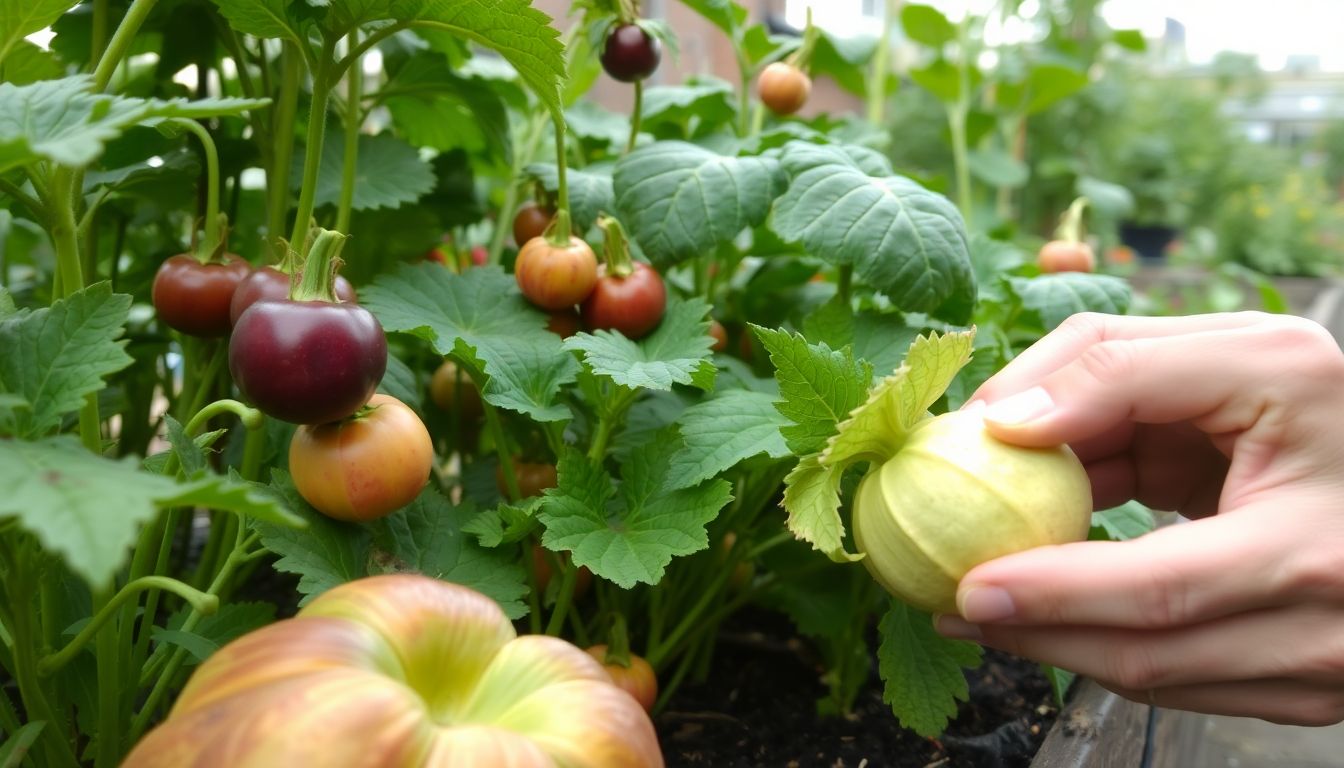
Identifying Edible Plants
Identifying edible plants in urban environments can be a rewarding and sustainable way to supplement your diet, but it’s crucial to approach this practice with caution and thorough knowledge. Before you start foraging, it’s essential to understand that consuming the wrong plant can lead to severe health issues, including allergic reactions or even poisoning. Therefore, it’s paramount to be 100% sure of a plant’s identity before consuming it.
Let’s begin with a common urban plant, the dandelion (Taraxacum officinale). This plant is easily recognizable by its bright yellow flower that turns into a puffball of seeds. The leaves are lobed and grow from a central point, resembling a rosette. Both the leaves and flowers are edible, with the leaves tasting best when young and the flowers being a delightful addition to salads or teas.
Another common urban plant is the clover (Trifolium repens). This plant is often found in lawns and fields, with its distinctive trifoliate leaves (three leaflets per stem) and small, white, pink, or purple flowers. The young leaves and flowers are edible and can be added to salads or used to make a refreshing tea.
Purslane (Portulaca oleracea) is a succulent plant that thrives in urban environments, often growing in cracks in the pavement or in gardens. It has thick, fleshy leaves that grow directly from the stem and small, yellow flowers. Both the leaves and stems are edible and have a slightly tangy, lemony flavor. They can be added to salads or used in cooking.
Lamb’s quarters (Chenopodium album) is another common urban plant that is often mistaken for a weed. It has green, triangular leaves that are often covered in a white, powdery residue, giving it its name. The leaves are edible and have a mild, spinach-like flavor. They can be cooked like spinach or added to soups and stews.
When identifying these plants, it’s important to look at the entire plant, not just one part. The shape of the leaves, the arrangement of the flowers, and the overall growth habit can all help you identify a plant. It’s also a good idea to consult multiple sources, including books and online resources, to ensure that you are correctly identifying the plant. If you’re still unsure, it’s best to err on the side of caution and not consume the plant.
In addition to being sure of the plant’s identity, it’s also important to consider the environment in which the plant is growing. Plants that are growing in polluted areas, such as along busy roads or in areas where pesticides have been used, should not be consumed. It’s also a good idea to avoid plants that are growing in areas where dogs or other animals may have defecated.
By following these guidelines and approaching plant identification with care and caution, you can safely and sustainably enjoy the bounty of edible plants that can be found in urban environments.
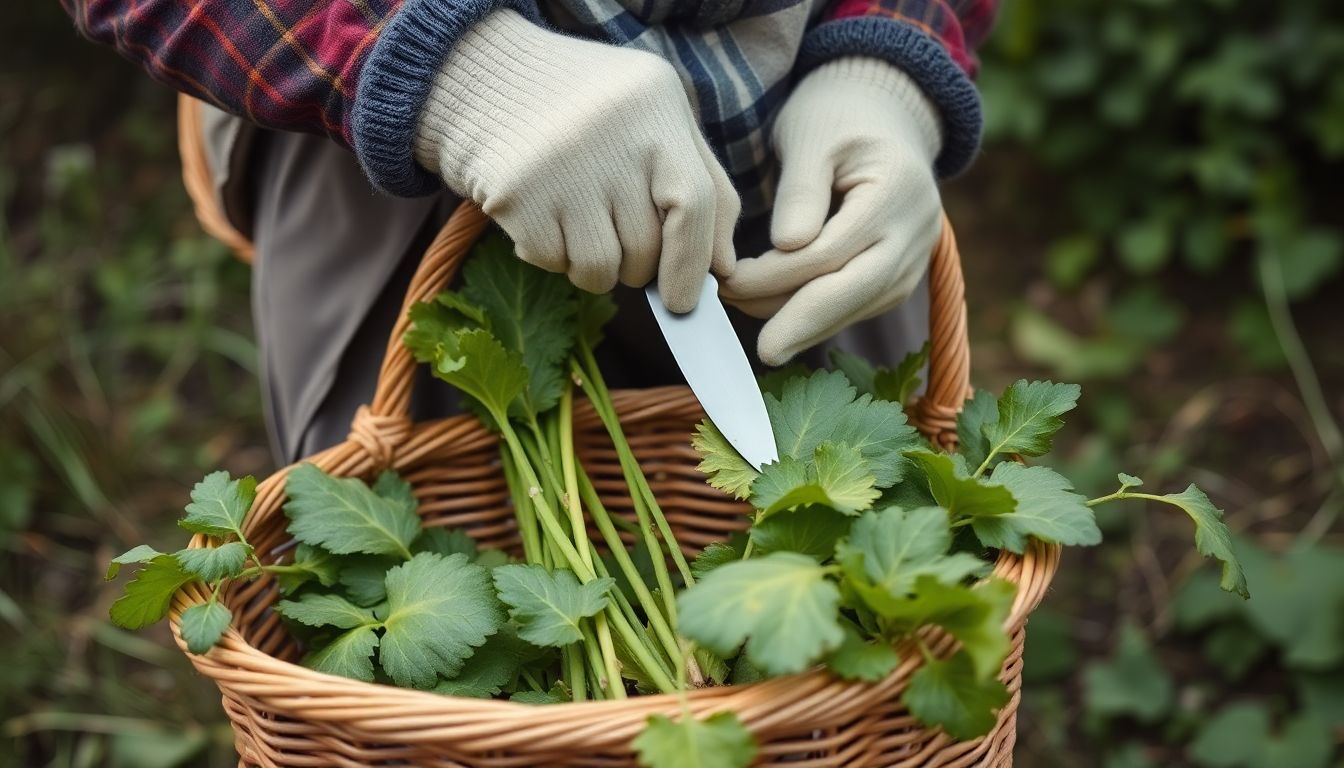
Foraging Tools and Techniques
Urban foraging, the practice of gathering wild plants for food or other uses in urban environments, requires a combination of essential tools and techniques to ensure a safe, sustainable, and enjoyable experience. The first line of defense for any forager is a good pair of gloves. Not only do they protect your hands from thorns, prickles, and harsh plant surfaces, but they also prevent you from transferring or receiving bacteria, viruses, or other contaminants. Gloves are particularly important when handling plants that may be growing in polluted or contaminated soil.
Carrying a suitable basket or bag is another crucial aspect of urban foraging. A basket or bag with a sturdy handle and a wide, flat base is ideal for collecting your findings. It should be large enough to hold a good amount of produce but not so large that it becomes unwieldy. A basket with a lid can also help keep your harvest clean and protected from dust and debris.
When it comes to harvesting tools, a pocket knife or small pruning shears are invaluable. A sharp pocket knife can help you cut through tough stems and remove leaves without damaging the plant. Pruning shears, on the other hand, are perfect for snipping off small branches or cutting through woody stems. They also help you harvest cleanly, reducing the risk of damaging the plant or leaving behind unsightly cuts.
Sustainable harvesting is key to preserving urban ecosystems and ensuring that there will be plants for future foragers to enjoy. When harvesting, always follow the ‘one-third rule’: never take more than one-third of a plant’s leaves, flowers, or fruits. This allows the plant to continue photosynthesizing and producing energy, ensuring its survival and growth. Additionally, avoid harvesting from plants that are already stressed or in small numbers. It’s also important to harvest from a variety of locations to spread out the impact on any one area.
Lastly, always be aware of your surroundings and the potential hazards in urban environments. Avoid foraging near busy roads, industrial areas, or other sources of pollution. If you’re unsure about a plant’s identification or safety, it’s always best to err on the side of caution and leave it be. With the right tools, techniques, and respect for the environment, urban foraging can be a rewarding and enriching experience.
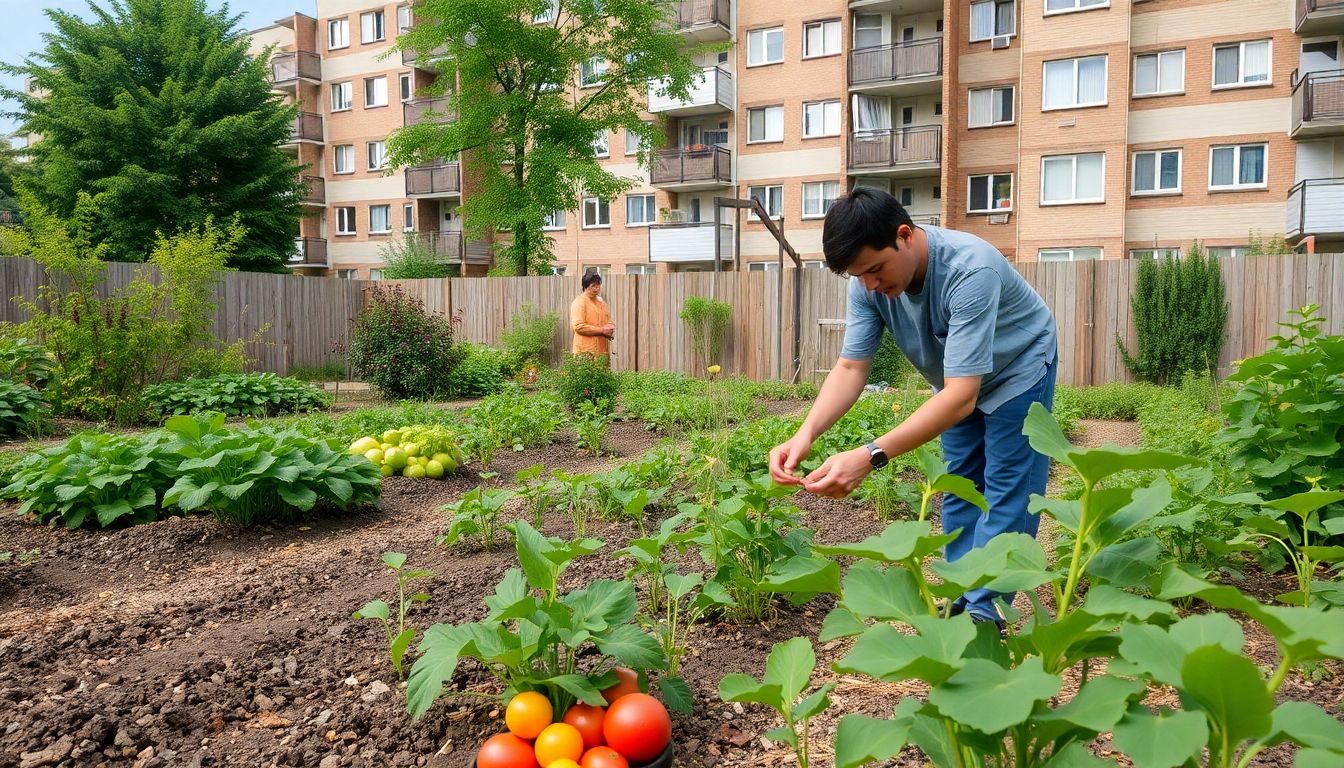
Foraging in Different Urban Environments
Urban foraging, the practice of gathering wild plants for food or other uses, is a rewarding and sustainable way to connect with nature in the city. Different urban environments offer unique opportunities and challenges for foragers. Let’s explore three distinct urban environments: parks, community gardens, and abandoned lots.
Parks, often maintained by local governments, are typically well-tended and offer a diverse range of plant life. Here, you might find edible plants like dandelions, clover, and wild berries. The benefits include accessibility and the likelihood of finding a variety of species. However, parks can also pose risks. Pesticides and herbicides may be used, so it’s crucial to research the park’s maintenance practices. Additionally, some parks may have restrictions on foraging, so always check local regulations.
Community gardens, plots of land tended by local residents, can be a forager’s paradise. Here, you’ll find a mix of cultivated and wild plants. The benefits are numerous: the plants are often organically grown, and you might even make new friends among the gardeners. However, always ask for permission before foraging, respect the garden’s rules, and never take more than you need. Remember, these gardens are laboriously maintained by volunteers.
Abandoned lots, while offering potential foraging opportunities, come with significant risks. These lots can harbor invasive species, poisonous plants, and even hazardous waste. Benefits include the potential for finding rare or unique plants. However, proceed with extreme caution. Wear gloves and protective clothing, and always research the lot’s history. Never consume anything unless you’re absolutely sure of its identification and safety.
Regardless of the environment, always follow these safety and ethical guidelines: never take more than you need, respect private property, and never forage where it’s prohibited. Carry a field guide or use a reliable plant identification app, and always double-check your findings with an expert. Happy foraging!
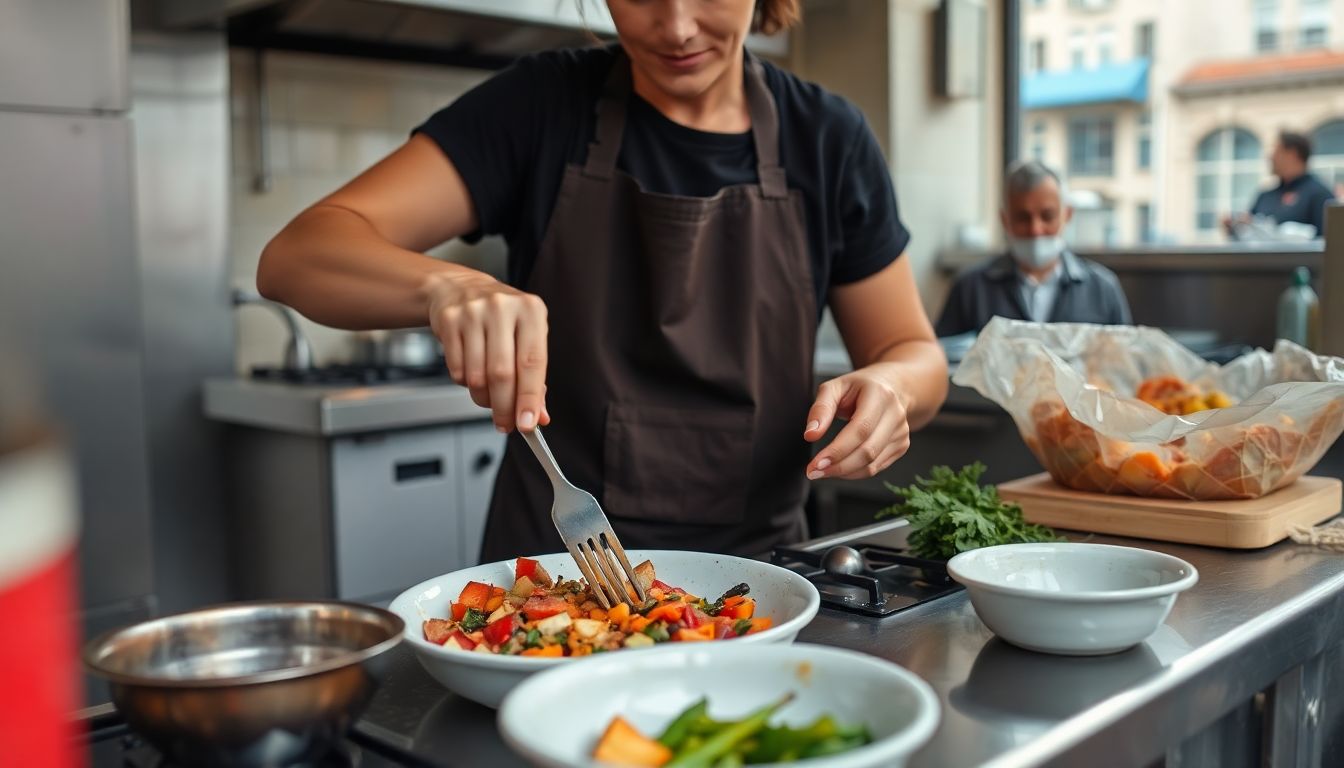
Preparing and Cooking Foraged Food
Embarking on a culinary adventure with foraged food from urban environments can be a rewarding experience, offering a unique connection to nature and a chance to incorporate fresh, wild ingredients into your meals. Before you begin, it’s crucial to familiarize yourself with the most common edible plants in your area and learn how to identify them accurately. Always remember that if you’re unsure about a plant, it’s best to leave it untouched to avoid potential harm.One of the most common urban foraged foods is dandelion (Taraxacum officinale). This humble weed is not only edible but also packed with vitamins A, C, and K. To prepare dandelion greens, first, ensure you’ve picked them from a clean, pesticide-free area. Rinse the leaves thoroughly to remove any dirt or insects, then chop them coarsely. Dandelion greens have a slightly bitter taste, which pairs well with rich flavors. Try sautéing them with garlic and olive oil, or incorporate them into a hearty soup or stew. If you’re new to dandelions, start with a small amount to avoid any potential digestive upset, as some people may experience sensitivity.Another urban foraging staple is purslane (Portulaca oleracea). This succulent plant has a tangy, lemony flavor and is high in omega-3 fatty acids. To prepare purslane, simply snip off the leaves and tender stems, leaving the root to grow again. Rinse them well and pat dry. Purslane is excellent in salads, sandwiches, and even as a pizza topping. It’s generally well-tolerated, but some individuals with latex allergies might want to avoid it, as purslane belongs to the same family as latex-producing plants.Nettles (Urtica dioica) are another common urban foraged food, known for their stinging hairs that release formic acid when touched. To handle nettles safely, wear gloves or use tongs to place them in a pot of boiling water for a few minutes, which neutralizes the sting. Once cooked, nettles can be used like spinach in various dishes, such as soups, pesto, or even as a filling for ravioli. Nettles are highly nutritious, containing iron, calcium, and vitamins A and C. However, they can cause skin irritation in some people, so always be cautious when handling them.Lastly, don’t forget about the humble plantain (Plantago major). This unassuming weed has broad, ribbed leaves that are rich in minerals and antioxidants. To prepare plantain, pick the leaves, rinse them, and chop them finely. Plantain can be added to salads, sandwiches, or used as a wrap alternative. It has a mild, slightly sweet flavor and is generally well-tolerated, but some people might experience skin irritation if they have sensitive skin.Incorporating foraged food into your meals can be a fun and exciting way to explore the urban wilderness. By learning to identify, prepare, and cook common edible plants, you’ll not only expand your culinary repertoire but also gain a deeper appreciation for the natural world around you. Always remember to forage responsibly, ensuring you leave enough plants for wildlife and the environment to thrive.
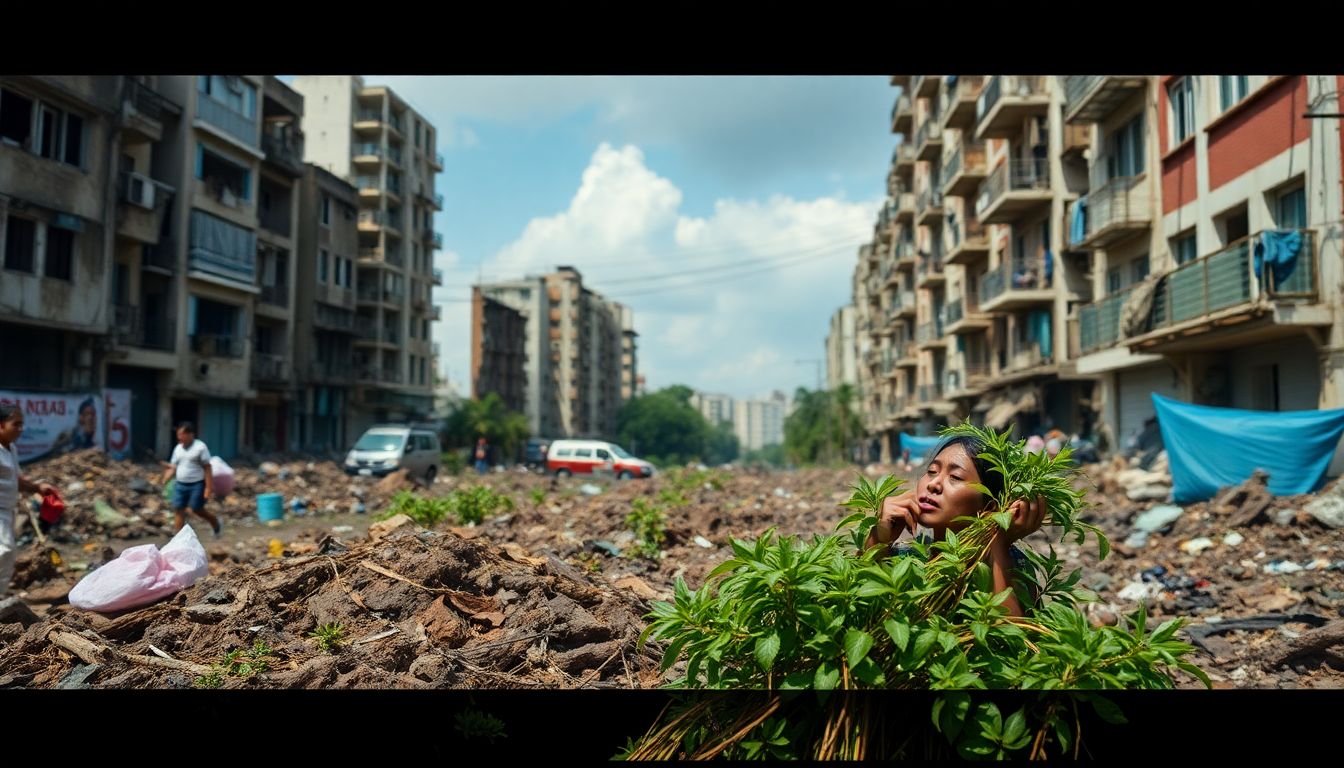
Urban Foraging in a Crisis
In the face of crises like natural disasters or economic downturns, urban foraging can emerge as a valuable, often overlooked skill. Urban foraging, the practice of gathering wild, edible plants in urban environments, can supplement food supplies, reduce reliance on expensive or scarce resources, and even foster a sense of community. However, it’s crucial to approach this practice responsibly and with careful planning.
Firstly, understanding the local flora is key. Before a crisis hits, invest time in learning about the edible, medicinal, and poisonous plants in your area. Join local foraging groups, attend workshops, or consult reliable field guides. Familiarize yourself with the seasons and locations of these plants to maximize your harvests.
Preparation is also vital. Have a basic first aid kit for any potential allergic reactions or injuries. Wear appropriate clothing and carry tools like gloves, a basket, and a sharp knife. Always ensure you have permission to forage on private property.
During a crisis, urban foraging should complement, not replace, other survival strategies. Diversify your food sources by maintaining a garden, preserving food, and storing non-perishable items. Forage only what you need and leave plenty for others and for the plants to regenerate.
Remember, safety is paramount. Never consume a plant unless you are 100% sure of its identification and edibility. Avoid foraging in areas with potential contaminants like heavy traffic or industrial sites. Lastly, always be respectful of the environment, taking only what you need and leaving no trace.
Urban foraging in a crisis can be a lifeline, but it’s not a panacea. It’s one tool among many in a comprehensive survival strategy. By planning ahead, understanding our local ecosystems, and foraging responsibly, we can harness the power of nature to sustain us in challenging times.
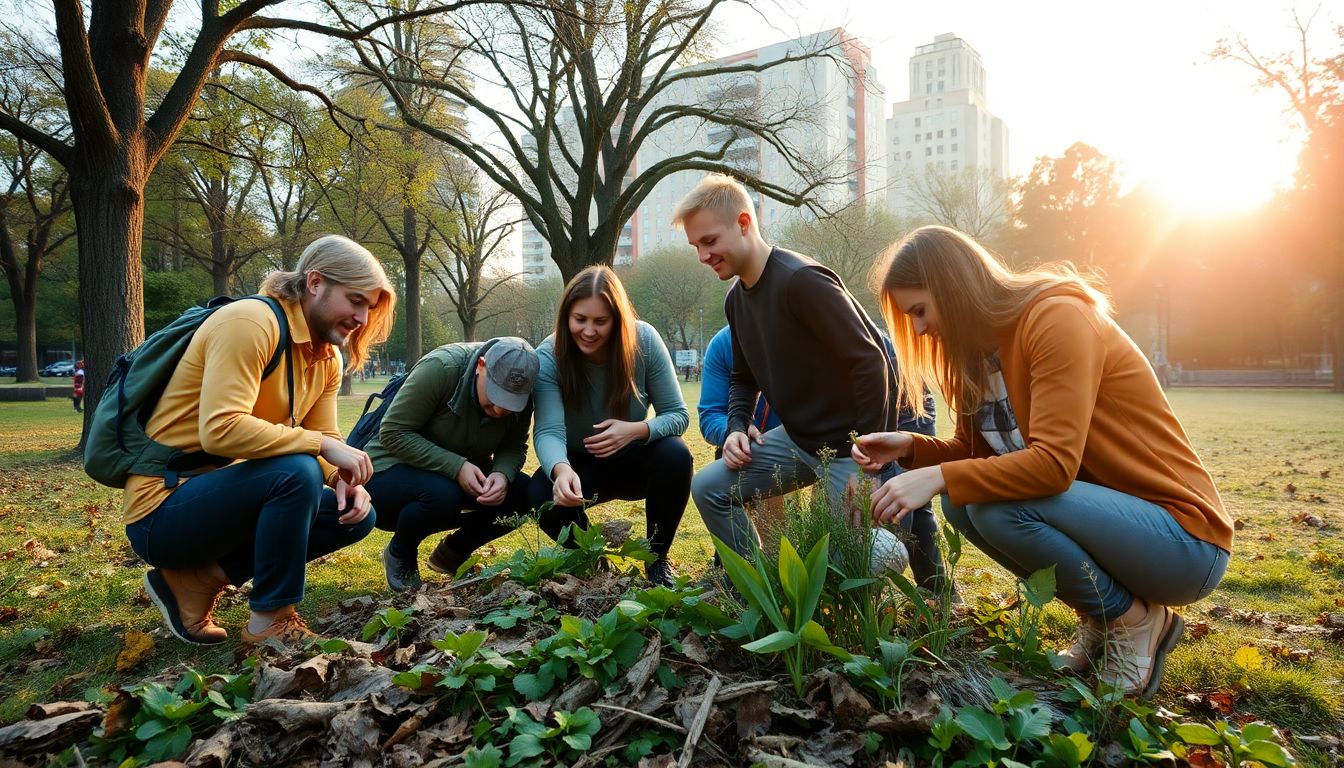
Building a Community of Foragers
In the heart of bustling cities, a unique and rewarding movement is taking root: urban foraging. Building a community of foragers in urban environments offers a myriad of benefits, transforming concrete jungles into vibrant, sustainable ecosystems. Firstly, it fosters a deeper connection with nature, allowing city dwellers to engage with their surroundings in a meaningful way. By learning to identify and responsibly harvest wild plants, we cultivate a sense of stewardship and appreciation for our urban green spaces.
Urban foraging also promotes a sustainable and healthy lifestyle. Foraging can supplement one’s diet with fresh, organic produce, reducing reliance on supermarkets and supporting local biodiversity. Moreover, it encourages physical activity and mindfulness, as foragers must observe their surroundings carefully and often walk long distances to find their quarry.
However, the most significant benefit of building a community of urban foragers is the creation of a supportive network. Connecting with like-minded individuals allows for the sharing of knowledge and resources. Beginners can learn from experienced foragers, while those with more experience can pass on their skills and wisdom. This mutual exchange of information ensures that the practice of urban foraging continues to grow and evolve.
To connect with other urban foragers, one can start by joining local foraging groups on social media platforms or online forums. Attending workshops and events hosted by local foraging organizations is another excellent way to meet potential community members. Once connected, sharing knowledge can be as simple as posting identification guides or recipes on group pages, or organizing group foraging trips and potlucks.
Sharing harvested food is another crucial aspect of building a supportive network. By pooling resources, community members can ensure that no food goes to waste and that everyone has access to a diverse range of wild edibles. This can be done through community meals, food banks, or simply by gifting excess harvests to neighbors and friends.
In essence, building a community of urban foragers is about more than just finding free food. It’s about cultivating a sense of community, promoting sustainable living, and fostering a deeper connection with the natural world. By sharing knowledge, resources, and harvested food, we create a supportive network that benefits not just individual foragers, but entire communities.

The Future of Urban Foraging
In the heart of our rapidly urbanizing world, a unique fusion of tradition and innovation is emerging: the future of urban foraging. This practice, once a niche activity, is poised to become a cornerstone of sustainable city living, intertwining with trends like vertical farming and urban agriculture to reshape our urban landscapes.
The rise of vertical farming, with its towering, climate-controlled structures, is a testament to our ability to grow food in the most unexpected places. These vertical farms, often located in disused buildings or purpose-built towers, can produce crops with up to 95% less water and 50% less energy than traditional farming methods. By integrating foraging into this vertical farming ecosystem, cities can harness the power of native, often overlooked, plant species. For instance, purslane, a common urban weed, is rich in omega-3 fatty acids and can thrive in harsh, urban environments.
Urban agriculture, another burgeoning trend, is also embracing foraging. Community gardens, rooftop farms, and even traffic medians are being transformed into productive green spaces. These areas, once considered wastelands, are now teeming with life, providing fresh produce, promoting biodiversity, and fostering community engagement. By incorporating foraging into these spaces, cities can create dynamic, multi-layered food systems that respect and utilize the unique ecology of each urban area.
City planners are also beginning to recognize the value of urban foraging. They are designing cities with foraging in mind, creating ‘edible landscapes’ that blend aesthetics with functionality. This includes planting fruit trees in public spaces, establishing wildflower meadows to attract pollinators, and even creating ‘forage trails’ that guide residents on urban foraging adventures. These initiatives not only enhance food security but also promote public health, environmental education, and community cohesion.
The future of urban foraging is about more than just gathering food; it’s about reimagining our relationship with our cities. It’s about recognizing the value of the wild, the unexpected, and the often-overlooked. It’s about creating cities that are not just sustainable, but resilient, adaptable, and life-affirming. By embracing urban foraging, we can cultivate a future where our cities are not just places we live, but places we grow.
FAQ
What is urban foraging and why is it relevant for urban survival?
How can I identify edible plants in my city?
What are some common edible plants found in urban areas?
Are there any plants I should avoid in the city?
How can I safely prepare foraged food?
What are some creative ways to incorporate foraged ingredients into my meals?
- Make a dandelion green salad with a lemon-tahini dressing.
- Sauté purslane with garlic and olive oil for a side dish.
- Add foraged mushrooms to a stir-fry or pasta dish.
- Create a wild berry smoothie or jam.
- Bake dandelion flower fritters or tempura.





